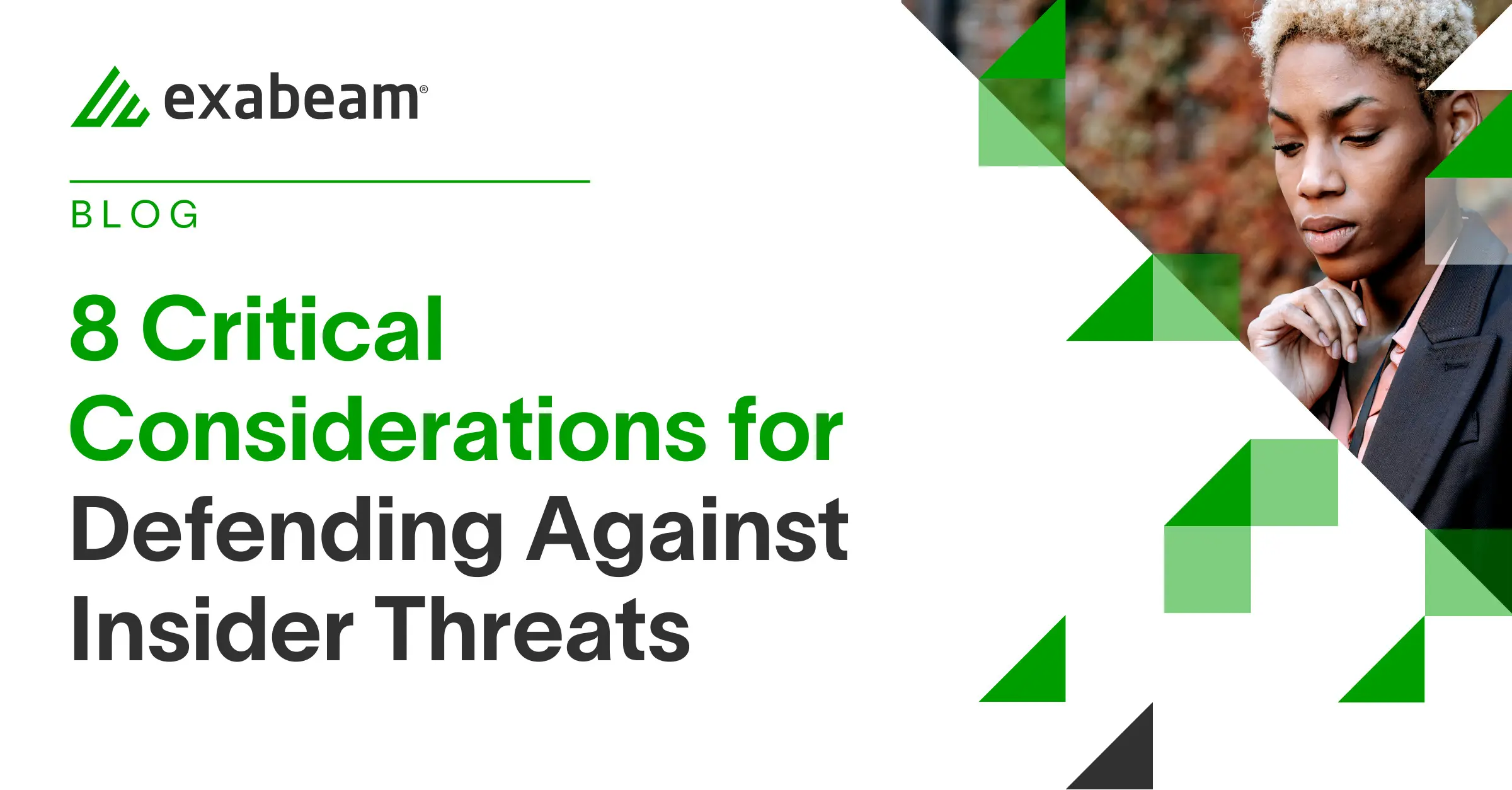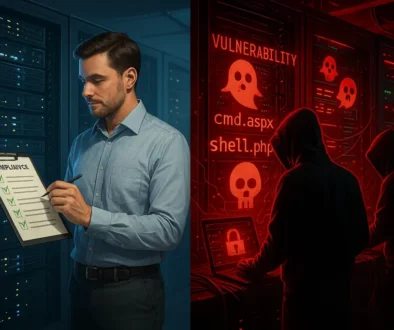8 Critical Considerations For Defending Against Insider Threats

Author: Jeannie Warner
Re-published from May 23, 2023
Defending against insider threats is a vital aspect of securing your organization’s sensitive data and assets. An effective insider threat program should be comprehensive and adaptable to the changing landscape of cybersecurity. In our last post, we discussed various threat indicators and ways advanced security information and event management (SIEM) solutions can detect them. In this fourth and final post of our series, we’ll explore essential considerations and tips for creating and maintaining a robust insider threat program.
In this article:
- 8 critical considerations for defending against insider threats
- 3 advanced best practices for insider threat programs
- Exabeam Fusion for insider threat defense
- Conclusion
8 critical considerations for defending against insider threats
- Form a planning team — Assemble a team with diverse expertise across security, IT, Legal, Human Resources, and executive units, including a Data Privacy Officer (DPO) if you have one, to develop informed policies and practical procedures for your organization’s insider threat program.
- Determine critical assets — Identify and prioritize both virtual and physical assets, such as internal documentation, key cards, product prototypes, SaaS applications, and on-premises employee data. Create watchlists of high-criticality services and ensure the highest coverage for your most sensitive assets.
- Perform a threat risk assessment — Conduct an assessment of your operations to identify security gaps that need to be addressed. This includes auditing system configurations, confirming settings, performing penetration testing, and testing your ability to identify suspicious patterns of behavior.
- Conduct employee background checks — Perform background checks to assess the risk posed by employees. Keep in mind that background checks can sometimes turn up falsely attributed information.
- Implement and maintain information security controls — Limit user access to data based on job requirements and restrict access to sensitive data through access policies and encryption.
- Build insider threat use cases — Document use cases for common issues and create procedures for protective monitoring during high-risk periods, such as employee resignations or terminations.
- Pilot, evaluate, and select modern monitoring and detection tools — Adopt comprehensive monitoring tools with behavioral analytics features that can perform end-to-end tracking of user activity and provide real-time visibility.
- Audit your existing insider threat initiatives — Periodically audit your tooling, permissions, and procedures to account for changes in systems, staffing, and threats. Update your program accordingly to prevent repeat incidents.
3 advanced best practices for insider threat programs
- Align terminology with the culture — Use neutral or friendly terminology to foster collaboration and trust among employees.
- Be transparent and build trust — Communicate the intent of your program and the monitoring process to employees, fostering trust and encouraging them to report suspicious activity.
- Focus on automated monitoring —Use automated monitoring to process and analyze information from across your systems, enabling security teams to focus on threat remediation and prevention.
Exabeam Fusion for insider threat detection, investigation, and response
Exabeam Fusion is a powerful cloud-native SIEM that offers advanced capabilities for combating and stopping hard-to-detect insider threats.
- Cloud-native architecture — Exabeam Fusion provides scalable, centralized storage and intelligent search capabilities for complete visibility across all attack surfaces.
- Understand normal behavior — Exabeam Fusion baselines user and device activities, assigns risk scores, and uses Smart Timelines™ to convey the complete history of an incident, enabling detection of insider threats.
- Detect and prioritize anomalies — The UEBA capabilities that come with Exabeam Fusion include rules and behavioral model histograms to find advanced threats, including insider threats, that other tools miss.
- Automated investigation and response — Exabeam Fusion automates detection, triage, and investigation, guiding analysts through response with Turnkey Playbooks and response actions.
Exabeam Fusion allows analysts to run end-to-end TDIR workflows from a single control panel, automating tasks like alert triage, incident investigation, and incident response.
Conclusion
By understanding the critical considerations for defending against insider threats and leveraging the capabilities of advanced SIEM solutions like Exabeam Fusion, organizations can effectively mitigate the risks posed by insider threats. Implementing a comprehensive insider threat program, along with adopting advanced best practices, helps organizations maintain a strong security posture and protect their valuable assets.
We hope you’ve enjoyed this blog series. Defending against insider threats is a continuous and evolving process that requires vigilance and commitment from all members of the organization. By following the guidelines and recommendations outlined in this series, organizations can take significant steps towards safeguarding their assets and ensuring the ongoing success and security of their operations.



